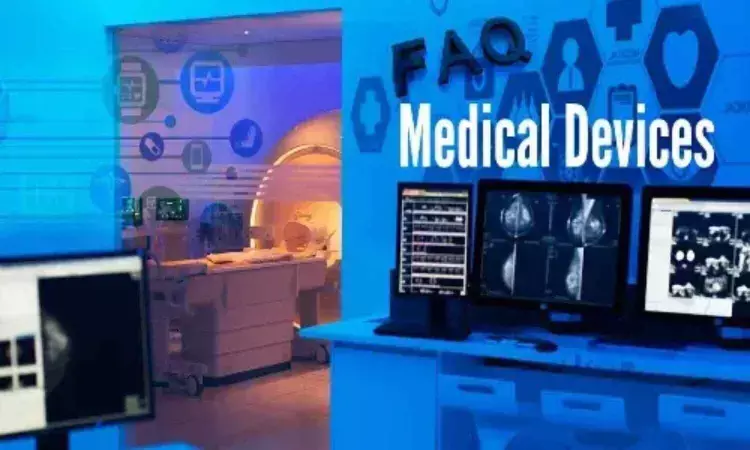- Home
- Medical news & Guidelines
- Anesthesiology
- Cardiology and CTVS
- Critical Care
- Dentistry
- Dermatology
- Diabetes and Endocrinology
- ENT
- Gastroenterology
- Medicine
- Nephrology
- Neurology
- Obstretics-Gynaecology
- Oncology
- Ophthalmology
- Orthopaedics
- Pediatrics-Neonatology
- Psychiatry
- Pulmonology
- Radiology
- Surgery
- Urology
- Laboratory Medicine
- Diet
- Nursing
- Paramedical
- Physiotherapy
- Health news
- Fact Check
- Bone Health Fact Check
- Brain Health Fact Check
- Cancer Related Fact Check
- Child Care Fact Check
- Dental and oral health fact check
- Diabetes and metabolic health fact check
- Diet and Nutrition Fact Check
- Eye and ENT Care Fact Check
- Fitness fact check
- Gut health fact check
- Heart health fact check
- Kidney health fact check
- Medical education fact check
- Men's health fact check
- Respiratory fact check
- Skin and hair care fact check
- Vaccine and Immunization fact check
- Women's health fact check
- AYUSH
- State News
- Andaman and Nicobar Islands
- Andhra Pradesh
- Arunachal Pradesh
- Assam
- Bihar
- Chandigarh
- Chattisgarh
- Dadra and Nagar Haveli
- Daman and Diu
- Delhi
- Goa
- Gujarat
- Haryana
- Himachal Pradesh
- Jammu & Kashmir
- Jharkhand
- Karnataka
- Kerala
- Ladakh
- Lakshadweep
- Madhya Pradesh
- Maharashtra
- Manipur
- Meghalaya
- Mizoram
- Nagaland
- Odisha
- Puducherry
- Punjab
- Rajasthan
- Sikkim
- Tamil Nadu
- Telangana
- Tripura
- Uttar Pradesh
- Uttrakhand
- West Bengal
- Medical Education
- Industry
Union Budget 2025 Disappoints Medical Devices Industry, No Relief for Import Dependency: AiMed

New Delhi: The Union Budget 2025 has laid out a strong macro-economic and policy direction, but it has left the medical devices industry disheartened due to the lack of investment promotion measures for the heavily import-dependent sector. Rajiv Nath, Forum Coordinator of the Association of Indian Medical Device Industry (AiMeD), voiced concerns over the absence of policy interventions to reduce India's reliance on medical device imports, which currently stands at 70%.
While Nath acknowledged the budget’s positive measures, including the establishment of a Manufacturing Mission, support for MSMEs and startups, promotion of R&D and innovation, and steps towards a trust-based regulatory framework with decriminalization of several laws, he stressed that the government failed to address the pressing concerns of the medical devices sector.
On behalf of the industry, he expressed disappointment over the finance minister’s silence on medical devices in the budget speech and the lack of tariff protection to encourage domestic manufacturing.
Speaking to Medical Dialogues, Nath said, “The industry is disappointed that expectations of the Medical Devices sector, many of which had been supported by the Department of Pharmaceuticals as an investment enabler under the National Medical Device 2023 policy, find no mention in the speech. We were hoping to see the finance minister speak about Medical Devices as a Make in India enabler and address the 70% import dependence due to inadequate tariff protection with duties at zero to 7.5% in most cases and an ever-rising import bill that is expected to cross ₹75,000 crore this year.”
Industry Expectations from Budget 2025
Rajiv added that the Indian medical devices sector had anticipated several key policy interventions in the budget, which were ultimately missing. One of the primary expectations was an increase in customs duty to a nominal 10-15% as part of a predictable tariff policy aimed at reducing import dependency. The industry also sought correction of the inverted duty structure through the application of a 5% health cess on the remaining medical devices. While this cess was introduced in 2020, it was applied to only five of the 27 four-digit HS Codes, leaving 22 categories unaddressed. Another major concern was trade margin capping, as several imported medical devices are reportedly sold at 10 to 20 times their cost, leading to inflated healthcare expenses. The sector had also hoped for income tax benefits to incentivize capital expenditure (CAPEX) and R&D investments, which would help strengthen domestic manufacturing and innovation. Additionally, the industry recommended standardizing the GST rate at 12% across all medical devices to simplify the tax structure and ensure consistency, making it easier for businesses to operate within the sector.
Budget Allocation for Medical Devices Manufacturing
Despite these concerns, Nath acknowledged a positive development in the budget—the increase in funds allocated to schemes promoting medical devices manufacturing. The allocation has been raised to Rs 5,200 crore, up from Rs 3,300 crore, which could provide some support for the sector.
However, the lack of direct policy interventions and investment incentives remains a major setback for an industry striving to strengthen domestic manufacturing and reduce dependency on costly imports.
Farhat Nasim joined Medical Dialogue an Editor for the Business Section in 2017. She Covers all the updates in the Pharmaceutical field, Policy, Insurance, Business Healthcare, Medical News, Health News, Pharma News, Healthcare and Investment. She is a graduate of St.Xavier’s College Ranchi. She can be contacted at editorial@medicaldialogues.in Contact no. 011-43720751


